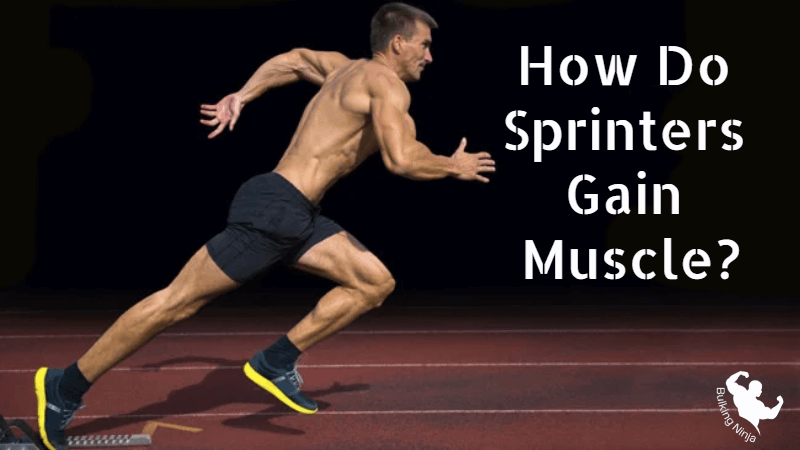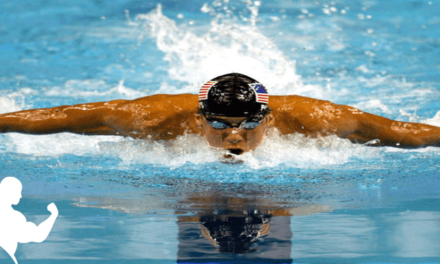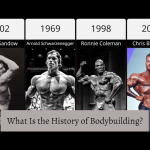When it comes to building muscle and enhancing strength, most people associate it with the weight room and traditional exercises like lifting barbells and swinging kettlebells.
However, there is a different approach that can be just as effective: sprinting. Short, all-out sprints on the track offer a unique path to muscle growth and development. By regularly engaging in fast and intense sprinting sessions, sprinters can help build their strength and increase their size.
This alternative method may seem unconventional, but it has been proven to be effective in promoting muscle growth and enhancing overall physical performance.
So, imagine putting aside the traditional roads and embracing the power of short, all-out sprints on a regular basis. It can help you build up your strength, increase your muscle size, and achieve your fitness goals.
Table of Contents
- How Do Sprinters Gain Muscle?
- Does Sprint Training Increase Strength?
- SPRINTING INCREASES YOUR METABOLISM
- WHY SPRINTING CAN MAKE YOU STRONGER?
- SPRINTS EXERCISES FOR GETTING STRONGER AND FASTER
- SPRINTING TAKE CARES OF YOUR HEART
- DOES SPRINTING BURN FAT?
- SPRINTER MUSCLES
- BENEFITS OF SPRINTING
- Frequently Asked Questions
- Do sprints burn belly fat?
- How long should you sprint for fat loss?
- Is sprinting better for burning fat?
- Is it better to sprint or jog?
- Difference between sprinting and running?
- Do sprinters need to lift weights?
- Difference between sprinting and jogging?
- What muscles do sprinters need?
- Muscles most used in sprinting?
- What muscles increase sprint speed?
- What muscles make you sprint faster?
- Why does sprinting build muscle?
- Why does sprinting increase muscle mass?
- Does sprinting affect muscle mass?
- Can sprinting build leg muscles?
- Does sprinting build arm muscle?
- Does sprinting alone build muscle?
- Conclusion
How Do Sprinters Gain Muscle?
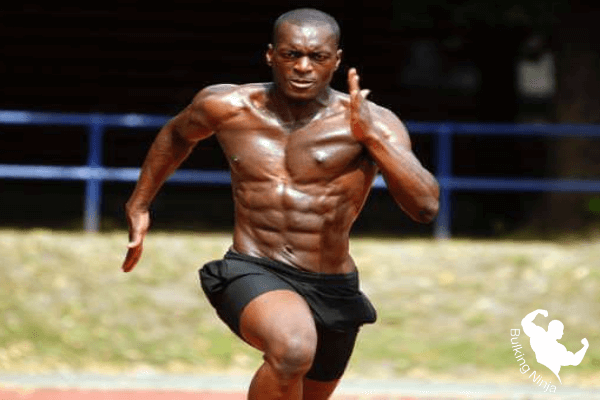
Sprinting Makes Muscle
Sprinting is a powerful anaerobic exercise that plays a significant role in building muscles. While weight training focuses on targeting specific body parts individually, sprinting engages numerous muscles simultaneously, making it a comprehensive and efficient muscle training exercise.
Several studies have shown that sprinting can enhance required protein synthesis pathways, leading to a substantial increase in the breakdown of protein by up to 230 percent. When combined with proper nutrition and adequate recovery, sprinting actively promotes muscle building, resulting in a leaner and more defined physique.
Through the intensity and explosive nature of sprinting, the body is stimulated to adapt and grow stronger. The rapid and forceful contractions involved in sprinting activate muscle fibers, encouraging their growth and development. This process leads to increased muscle mass and overall muscular strength.
In addition to its muscle-building benefits, sprinting also contributes to improved cardiovascular fitness and increased metabolic rate. The high-intensity nature of sprinting stimulates the body’s energy systems, boosting endurance and promoting fat burning. Read more about the difference between jogging, running and sprinting
Does Sprint Training Increase Strength?
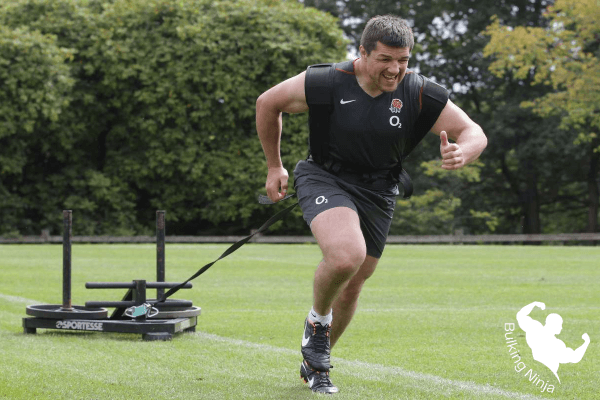
The question regarding sprinters gaining muscle is not simply about increasing size, but rather how sprinting can contribute to strength and muscle development. It is important to understand the reciprocal benefits of sprinting and lifting. Read about how to mentally ready for exercise?
Many elite sprinters incorporate lower-body exercises like deadlifts, squats, and reverse hypers into their training. These exercises target the posterior chain muscles, which play a significant role in generating force. Lifters who already include these exercises in their routine can further enhance their strength through sprints.Lets Start your fitness journey with different ways to gain muscle without weights lifting.
Sprints stimulate muscle growth through various mechanisms. They activate fast-twitch fibers, engage the central nervous system (CNS) by triggering motor neurons at a high rate, and serve as a form of resistance training. Sprinters exert maximum force to overcome gravity and propel themselves forward with each step.
SPRINTING INCREASES YOUR METABOLISM
You Lose Weight Even After The Workout Is Over
During sprinting, the body burns a substantial amount of calories due to the intense physical effort. This calorie burn is not only limited to the duration of the workout but continues even after the sprinting session is over.
The increased metabolism caused by sprinting allows the body to continue burning more calories even at rest. Research conducted by Professor James Timmons at Heriot-Watt University in Edinburgh supports the notion that sprinting can significantly boost the body’s metabolism.
This metabolic boost contributes to weight loss and promotes the development of lean muscle mass. The intense nature of sprinting stimulates the body to kick-start its metabolic processes, resulting in a greater calorie burn and improved muscle-building potential.
By including sprints in their fitness regimen routine, athletes can experience a substantial increase in calorie burning and muscle development, leading to a more toned and fit physique.
WHY SPRINTING CAN MAKE YOU STRONGER?
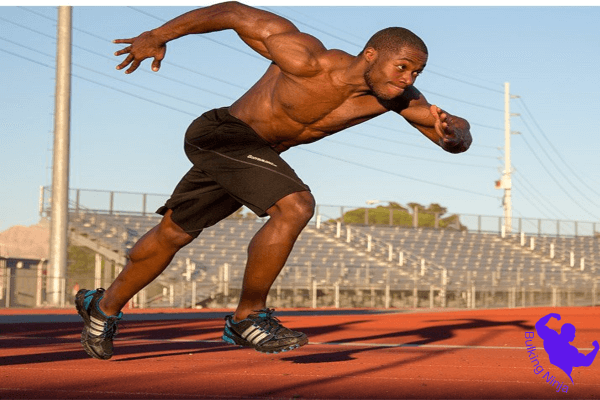
Sprinting is a powerful exercise that engages both the fast-twitch and slow-twitch muscle fibers, contributing to muscle growth and size. It enhances muscular endurance, allowing sprinters to maintain their explosive activity for longer durations. The repeated maximum force production during sprints activates the central nervous system and motor neurons, stimulating muscle activation and development.
In addition to sprinting, incorporating resistance training exercises such as deadlifts, squats, and reverse hypers can further build strength and target the posterior chain muscles.
These exercises create force and support sprinting performance by strengthening the lower body. By overcoming gravity and generating vertical force against the ground, sprinters train their muscles to withstand and move efficiently.
Maintaining proper form is crucial during sprinting, with a neutral head, relaxed shoulders, engaged hips, forward knees, and foot placement under the body. A knowledgeable speed coach can provide valuable pointers on running technique, helping sprinters optimize their performance and minimize the risk of injuries.
SPRINTS EXERCISES FOR GETTING STRONGER AND FASTER
Sprints are a highly effective method for gaining muscle. While they can be tiring, they recruit muscles throughout the body and require synchronization of movement.
This intense exercise activates the central nervous system (CNS) and helps build muscle strength. It is recommended to keep sprints relatively short in duration, lasting only a few seconds or running for a a specific length, like meters.
Rest periods between sprints are important to allow for recovery and maximize performance. Short runs during sprint training target specific muscles like the muscles in the back of the thighs, buttocks, lower legs, and front of the thighs.
By spacing the repetitions and maintaining a consistent speed, sprinters can achieve their goal of muscle development. The repetitive nature of sprinting over and over helps in building strength and endurance.
SPRINTING TAKE CARES OF YOUR HEART
Improves Heart Health
Sprinting is an excellent way to not only achieve weight loss but also reap cardiovascular benefits. It has a positive impact on blood pressure and helps strengthen the fast-twitch muscles, also known as type II muscles. These muscles play a significant role in improving heart function.
During sprinting, the effort exerted by the muscles intensifies, causing the heart to pump harder and enhancing overall blood circulation. This promotes heart health and reduces the chances of heart disease.
Additionally, sprinting helps in strengthening the muscles, contributing to a healthier and more toned physique.
SPRINTS INCREASES HUMAN GROWTH HORMONE PRODUCTION
Sprinting offers an exciting benefit for those looking to gain muscle. One of its key abilities is to increase the production of human growth hormone (HGH) in the body. HGH plays a significant role in various physiological processes, including muscle growth and repair. By engaging in sprints, you can stimulate the release of HGH, which promotes muscle development and enhances tissue growth.
Furthermore, sprinting not only contributes to muscle gain but also aids in weight loss. The intense nature of sprints leads to increased calorie expenditure, supporting a calorie deficit that is conducive to shedding excess weight. This dual effect of sprinting on muscle gain and weight loss makes it an effective strategy for individuals seeking to improve their body composition.
Additionally, the production of HGH through sprinting offers an added advantage by slowing down the aging process. HGH promotes the regeneration and repair of tissues, contributing to a more youthful and resilient body. The enhancement of tissue growth helps maintain muscle mass and strength, counteracting the age-related decline typically associated with the aging process.
DOES SPRINTING BURN FAT?
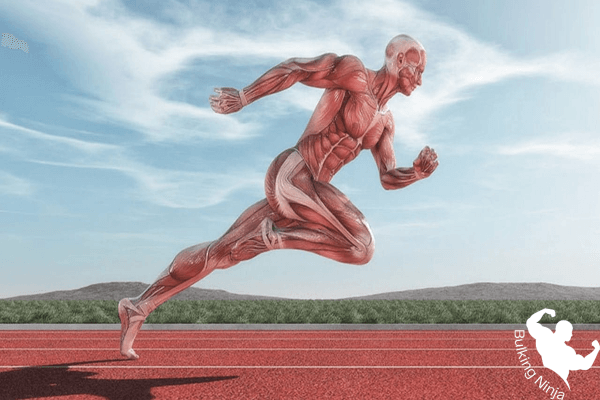
Sprinting is a highly effective method for athletes to gain muscle and achieve a more muscular physique. One of the key benefits of sprinting is its ability to burn body fat, resulting in a leaner physique.
Research has shown that sprinting can burn fat at a faster rate compared to steady-state exercises, making it a time-efficient approach to improving body composition.
During sprinting, the body requires a significant amount of energy to fuel the intense muscle contractions needed for speed and power. This energy is derived from the breakdown of stored fat and glycogen in the body.
As a result, sprinters not only burn body fat but also develop lean muscle mass, contributing to a more muscular appearance.
Sprint training sessions are regularly incorporated into the training programs of sprinters. These sessions further enhance muscle development and contribute to the overall muscularity of sprinter muscles.
The combination of explosive movements, high-intensity muscle contractions, and energy expenditure during sprinting creates an optimal environment for muscle growth and definition.
SPRINTER MUSCLES
Why Are Sprinters So Muscular?
Sprinting is a favored method among athletes for gaining muscle and sculpting a more muscular physique. While many individuals associate traditional weightlifting and resistance training with muscle building, sprinting offers a unique approach that yields impressive results.
Through the combination of explosive power, intense muscle contractions, and high-energy expenditure, sprinting helps athletes develop lean muscle mass and achieve a well-defined physique.
One notable advantage of sprinting is its ability to burn body fat effectively. During sprinting, the body taps into its energy stores to fuel the vigorous muscle contractions required for speed and power.
This process involves the breakdown of stored fat and glycogen, resulting in a reduction in body fat levels. As a result, sprinters not only experience gains in muscle mass but also attain a leaner and more sculpted physique.
Research supports the notion that sprinting is a time-efficient exercise for improving body composition. Studies have shown that sprinting can burn fat at a faster rate compared to continuous exercises, like running or biking.
This time-efficient nature of sprinting makes it an attractive option for individuals looking to optimize their workouts and achieve favorable changes in body composition.
BENEFITS OF SPRINTING
Some important benefits discuss here.
Muscle Development
Sprinting involves explosive movements and intense muscle contractions, leading to the development of lean muscle mass.
Fat Burning
Sprinting effectively burns body fat due to the high energy expenditure and utilization of stored fat for fuel.
Time Efficiency
Research shows that sprinting is a time-efficient exercise for improving body composition, as it burns fat at a faster rate compared to steady-state exercises.
Fast-Twitch Muscle Activation
Sprinting activates fast-twitch muscle fibers, known for their capacity to generate power and contribute to muscle growth and strength.
Posterior Chain Strength
Sprinting engages the posterior chain muscles, including the hamstrings, glutes, and calves, which contribute to overall muscle development.
Increased Metabolism
Sprinting boosts the metabolism, leading to continued calorie burning even after the workout.
Improved Athletic Performance
Regular sprint training enhances speed, power, and explosiveness, which can translate into improved performance in various sports and activities.
Frequently Asked Questions
Do sprints burn belly fat?
Yes, according to a systematic review of research studies, sprint interval training has been found to help burn belly fat to a greater degree compared to other forms of exercise.
How long should you sprint for fat loss?
For fat loss, a full sprinting workout should average anywhere from 15-25 minutes, when performed correctly. Including a proper warm-up of 10-12 minutes, you can complete a phenomenal full-body workout in less than 45 minutes. Remember, it’s about quality over quantity.
Is sprinting better for burning fat?
Yes, sprinting is better for burning fat. A 2019 study showed that high-intensity sprint interval training resulted in a 28.5% higher fat reduction compared to other forms of exercise. Running 10 x 100-meter sprints can help you burn up to 500 calories, and the entire session can be completed in around twenty minutes, making it an effective option even for those with a busy schedule.
Is it better to sprint or jog?
It is better to sprint if you want to burn more calories. Sprinting can burn more calories than jogging, making it a more effective choice for calorie expenditure.
Difference between sprinting and running?
The main difference between sprinting and running is the speed and intensity. Sprinting entails running at full capacity or near-maximum effort for a short distance, typically in bursts or intervals. It is characterized by explosive and fast movements.
On the other hand, running refers to a more moderate-paced, steady-state form of locomotion, typically maintained over longer distances. Sprinting is focused on short bursts of high-intensity effort, while running is more sustainable and suited for endurance.
Do sprinters need to lift weights?
Yes, sprinters should lift weights as it helps increase stride length, explosiveness, and reduce the risk of injury.
Difference between sprinting and jogging?
The main difference between sprinting and jogging is the intensity and speed. Sprinting involves running at a very high speed for a short distance, while jogging is a slower-paced running at a moderate intensity for a longer duration.
What muscles do sprinters need?
Sprinters primarily need strong and powerful leg muscles, including the quadriceps, hamstrings, glutes, and calves. They also require strong core muscles for stability and upper body muscles for balance and arm drive.
Muscles most used in sprinting?
The muscles most used in sprinting are the quadriceps, hamstrings, glutes, calf muscles, and hip flexors.
What muscles increase sprint speed?
The muscles that contribute to increased sprint speed are the glutes, quadriceps, hamstrings, calf muscles, hip flexors, and core muscles.
What muscles make you sprint faster?
Quadriceps,
Hamstrings,
Glutes,
And Calves.
Why does sprinting build muscle?
Sprinting builds muscle because it places a significant demand on your leg muscles, causing them to contract forcefully and repeatedly. This stress leads to muscle growth and strength development.
Why does sprinting increase muscle mass?
Sprinting increases muscle mass because it stimulates muscle fibers to grow in response to the high-intensity, repetitive contractions required during sprinting.
Does sprinting affect muscle mass?
Yes, sprinting can affect muscle mass positively by promoting muscle growth, especially in the leg muscles, due to the intense and repetitive contractions involved in sprinting.
Can sprinting build leg muscles?
Yes, sprinting can build leg muscles as it involves powerful contractions of the leg muscles, particularly the quadriceps, hamstrings, and calf muscles, which can lead to muscle growth and strength development in the legs.
Does sprinting build arm muscle?
Sprinting primarily focuses on the lower body muscles, so it doesn’t significantly build arm muscles. To build arm muscles, you would need to incorporate exercises that specifically target the arms, such as weightlifting or resistance training.
Does sprinting alone build muscle?
Sprinting primarily builds muscle in the lower body, especially the legs, but it may not be sufficient for overall muscle development. To build muscle in other areas of the body, like the upper body, you would typically need to incorporate additional exercises and resistance training for a balanced muscular development.
Conclusion
By incorporating sprinting into a well-rounded exercise plan, individuals can trigger muscle development, burn fat, improve strength and power, and achieve a lean and muscular physique.
Sprinting provides a time-efficient and effective approach to muscle development, making it an excellent choice for individuals looking to enhance their physical performance and overall fitness.
